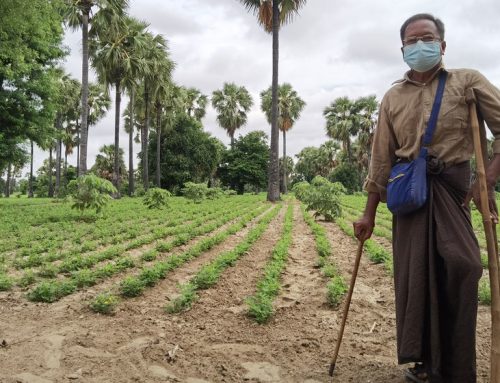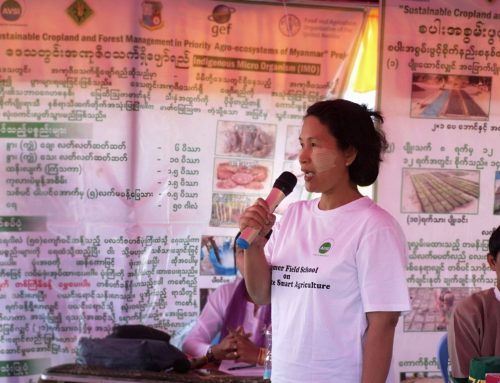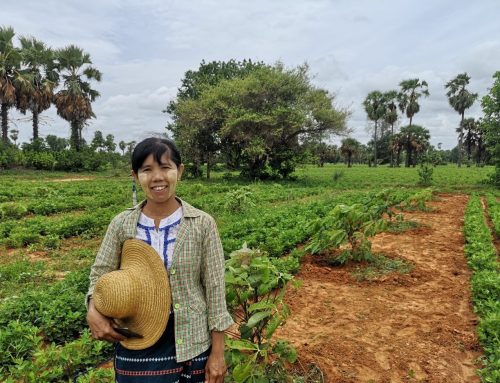“Previously I haven’t tried this soil covering by crop residue, mulching. After the farmer field school training, I would like to test.” this technique said village farmer from Sin Tat Kyin village, U Ye Tin.

The Farmer Field School training is provided in Sin Tat Kyin village by the project, “Sustainable Cropland and forest management in priority agro-ecosystems of Myanmar (SLM-GEF)” in collaboration with Cesvi and technical support by Department of Agriculture in Kyaukpadaung township. This village is only 5 miles away from the Kyaukpadaung township. There are totally 30 participants from this village joined the training. U Ye Tin is one of the participants in the farmer field school. He has learned a lot regarding the Climate Smart Agriculture (CSA) through this training.
After the training, U Ye Tin said, “I understand using pesticides and chemical fertilizer are not good for the soil. Zero tillage is a little impossible, but we are trying to minimize the tillage as much as we can.”

U Ye Tin is growing tomato in the farm by covering the soil with weeds, tamarind leaves and crop residue (groundnut pod shell). “Previously, we uprooted the weeds from the farm and threw away, we never cover the soil. After the training, we know the benefits of covering soil and we would like to test it. I noticed that it would be better for the retention of soil moisture. If this method is effective, I will continue to do it. If people see my farm is good with this method, they will also try the same way” said about his opinion. At that time, his tomato farm is only 10 days old. His farm is on the way to the village and people can clearly visible his farm.
One month later, the project staff visited again on his farm. U Ye Tin has divided two portions his tomato farm; the right side of the tomato plants is applied mulching practices and the left side is kept as normal practice without mulching. At that moment, the right side of the tomato farm which was applied soil mulching by weed and crop residues is growing up very well and the crop performance in the left side is with tiny plants. When we asked about the condition, he said about his one-month experience, “I covered only right side by weed and crop residues and didn’t cover the left side. Within these days, there is no rain and the plants from the left side can’t conserve the soil moisture, plants suffered the water deficit, and all are dead. Therefore, we are planting again on the left side. The plant on the right side grows very well and look delightful with fruits. Now, I am applying the soil mulching practices for the whole farm.”
According to results of his own demonstration tomato plot between mulching and without mulching, U Ye Tin concluded that applying the mulching practices on tomato field could conserve the soil moisture, still alive and is fruitful while the tomato plants that of control plot (without applying mulching practices) are suffering the water deficit and gradually died off when there is no rain at all about a month. It was found that the soil mulching which is one of the Climate Smart Agriculture practices is not only conserved the soil moisture and but also suppressed the growth of weed which is consequently benefit to the crop performance of tomato plants.






